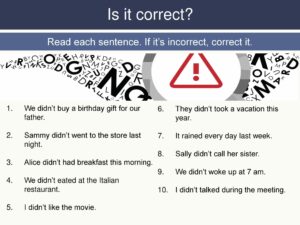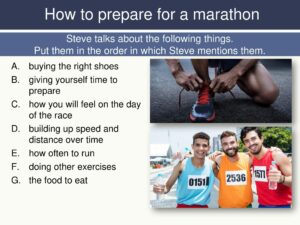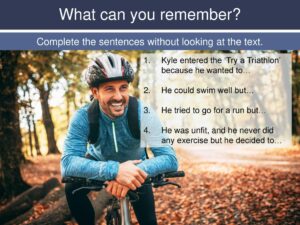{{ post.title }}
{{ post.excerpt }}
Read full story
Hi, I’m Sandra. I work at Off2Class producing bright, beautiful ESL lesson content to motivate your students and save you time. In this post I’ll show you how to teach ESL students about travel, health, and money.

 Unit 19 Travel
Unit 19 TravelTo teach ESL students about travel, health, and money, let’s start with travel. In this unit, we provide more practice with the past simple, which was introduced in Unit 18 In the Family. The past simple negative and past simple questions are introduced, along with verbs that express likes and dislike, such as love, like, don’t like, don’t mind and hate. We also look at helpful language to talk through mishaps and accidents.
When introducing the past simple negative, you need to be very clear about how you define the English infinitive. The past simple negative is formed with a subject + didn’t + the bare infinitive. Whether you prefer the term bare infinitive or infinitive without to, be consistent. Further, verbs expressing likes and dislike take either a gerund – or verb + ing – and some can take the infinitive. Confusion reigns if you don’t use these terms consistently.
For example:
I didn’t go to the shop, not I didn’t to go to the shop or I didn’t went to the shop.
Mom likes swimming, or Mom likes to swim, or:
I don’t mind doing homework, but not I don’t mind to do homework.
To keep it simple, we suggest that you only introduce verbs expressing like and dislike with the gerund.
Second, you will need to model and drill past simple questions. Connected speech makes it challenging for students to hear and pronounce Did you, Did we, etc. in an unaccented position. It’s fine to exaggerate the stressed main verb when you introduce past simple questions.
For example:
Did you in Did you watch the film? Is always reduced to something like /didja/ in spoken English, and students should learn these forms as a lexical chunk.

 Unit 20 Health and fitness
Unit 20 Health and fitnessIn this Unit, we tackle two modal verbs, could and have to, in positive and negative forms. We look at can and could for ability, along with have to and don’t have to for necessity and lack of necessity respectively. These modal verbs provide greater flexibility for students to express themselves, but you need to be aware of the pitfalls of the somewhat illogical use of modals in English.
First, can and could are used for more than ability, so when you introduce them, try to limit your examples to ability alone. Likewise, could is used to express both ability in the past and future possibility (and more), so be aware of the language you use during the lessons.
For example:
The could in I could run fast when I was young is not the could in You could work in pairs if you prefer or It could rain tomorrow.
Second, modal verbs are generally unstressed and students will need your assistance to hear the correct forms. While we’ve provided audio recordings to build those skills, remember that students (and even native speakers) often find it challenging to distinguish I can play basketball from I can’t play basketball. Likewise, with have to, which reduces to /hafta/ in connected speech.

 Unit 21 Money and shopping
Unit 21 Money and shoppingIn this Unit, we introduce the present continuous. Students will have had exposure to this tense, and now’s the time to start to distinguishing its use from the present simple. Students have plenty of opportunities to talk about clothes and shopping. We include reading and listening tasks in which different people talk about what they usually wear and compare their styles to what they are wearing at a special event.
When you teach the present continuous, start modeling the contracted forms immediately. The auxiliary verb be is hard to hear in connected speech, and many students will omit it altogether. Help them avoid bad habits. For example, it will be common for students to produce sentences like I wearing a T-shirt. While it’s demotivating to correct students each and every time they make an error, remember that compound tenses are the norm in English, so we include classroom tasks in which students can practice these forms regularly.
Finally, don’t forget the dreaded stative verbs. After introducing the present continuous, go softly on the list of stative verbs that you introduce. Start with be, want, and feel, along with the verbs expressing likes and dislike from the previous unit. Remember that many stative verbs do have a continuous form, with or without a change in meaning.
For example:
I like swimming not I am liking swimming.
I want to find a job not I am wanting to find a job.
Happy teaching!
Sandra
Leave a reply